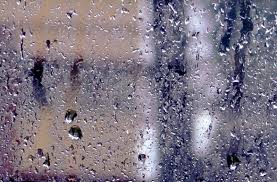
01 Dec WHAT CAUSES WINDOW SWEAT AND HOW TO CURE IT?
During the winter months, we start to feel the cold and this brings our attention to the damp and condensation issues that are lurking in our homes.

Condensation is perhaps the most common form of dampness that can appear in your property and can cause wallpaper to peel, damp patches to appear on walls and a build-up of moisture on your windows. Left untreated the condensation can create mould growth which can be potentially harmful and lead to serious health issues and breathing difficulties.
What Causes Window Sweat?
The physics of window sweat are simple. In the winter, the inside surfaces of even good quality windows are likely the coldest surfaces in your home. The air inside your home will naturally form a convection current cycle against these cold surfaces. As colder air sinks, warm air replaces it. As warm, moist air comes into contact with the colder interior glass surface, the air reaches the saturation point and releases this excess water on the glass in the form of condensation.
As the convection current continues over time, more and more moisture is deposited on the glass until your window sills become a sweaty mess.
Common daily activities in your home—such as cooking, showering, using unvented gas heat, and even breathing—add moisture to the air. When this warm humid air comes in contact with cold window glass, it cools and condenses.
In fact, four people create 60 litres of water vapour a day from just breathing and sweating. Cooking, showering and boiling the kettle add another 2.5 to3.5 litres.
The larger amount of water vapour in the air, the higher the relative air humidity. Additional moisture sources are indoor plants, drying of laundry, burning natural gas and so on.
The reason condensation appears in your property is due to a lack of adequate ventilation. As we spend more time indoors and make our property more energy efficient the build-up of moisture and humidity levels increase.
Window Sweat: Excessive Humidity
Excessive moisture forming on interior window glass may be pointing to an issue with the ventilation of your home. In fact, most homes with relatively modern window assemblies that are showing interior window condensation in the winter have more of an issue with the air quality in the home than the quality of the windows.
More and more, homes are being built using tighter, more efficient construction techniques. A tighter building envelope is great news when it comes to energy efficiency, but only if indoor air quality can be maintained through adequate ventilation.
In the old days, enough energy robbing cracks and poorly sealed openings provided unintentional ventilation to homes. As we’ve gotten better at sealing our homes, we’ve created another problem associated with bad air unless specific measures are taken to ensure adequate ventilation.
Moisture from showers, respiration, and cooking tends to build up in our homes during the winter, causing window condensation, mould and mildew growth, and possibly even rot.
How can condensation be reduced?
The key lies in controlling the humidity inside your home. During the hot humid summer, your house absorbs moisture. The same principle applies to a newly constructed or remodelled home, due to the abundance of moisture from the building materials used in construction. During the beginning of the colder season when you start to heat your home, condensation occurs. After a few weeks, your home will begin to dry out and you’ll see less condensation.
Opening a window briefly is a quick temporary solution. The drier cold air will enter the room while the moist air is allowed to escape.
Other solutions that may reduce condensation include:
- Cracking open a window or door daily to air out your house.
- Opening a window or running exhaust fans longer in the kitchen, bathroom and laundry room.
- Opening drapes and blinds, allowing air to circulate against windows.
- Turning off any humidifying devices in your home.
- Installing and using a dehumidifier.
- Making sure that open-faced gas heaters are connected to a chimney and using them as little as possible.
- Controlling or covering other sources of humidity (radiator water pans, fish tanks, large numbers of plants, etc.).
- Opening fireplace damper.
Another positive measure is to connect a small duct from the outdoors to the return side of a forced-air heating system, so that fresh air is drawn into the house whenever the system is operating. A damper placed in this duct will allow the home owner to control incoming air.
It is also very important to have high quality double or triple glazed windows with at least one Low-E glass pane installed in your home as warmer glass surface ensures lower amount of condensation.
MEGRAME INTERNATIONAL supplies latest generation timber, PVC and aluminium windows that minimize the likelihood of condensation in properly ventilated homes and maintain very high energy efficiency performance. MEGRAME can offer windows that meet passive house requirements. High quality windows are made using the latest technology and ensuring the highest standards of quality – it is a great choice for people seeking to live in a warm and cosy home.
